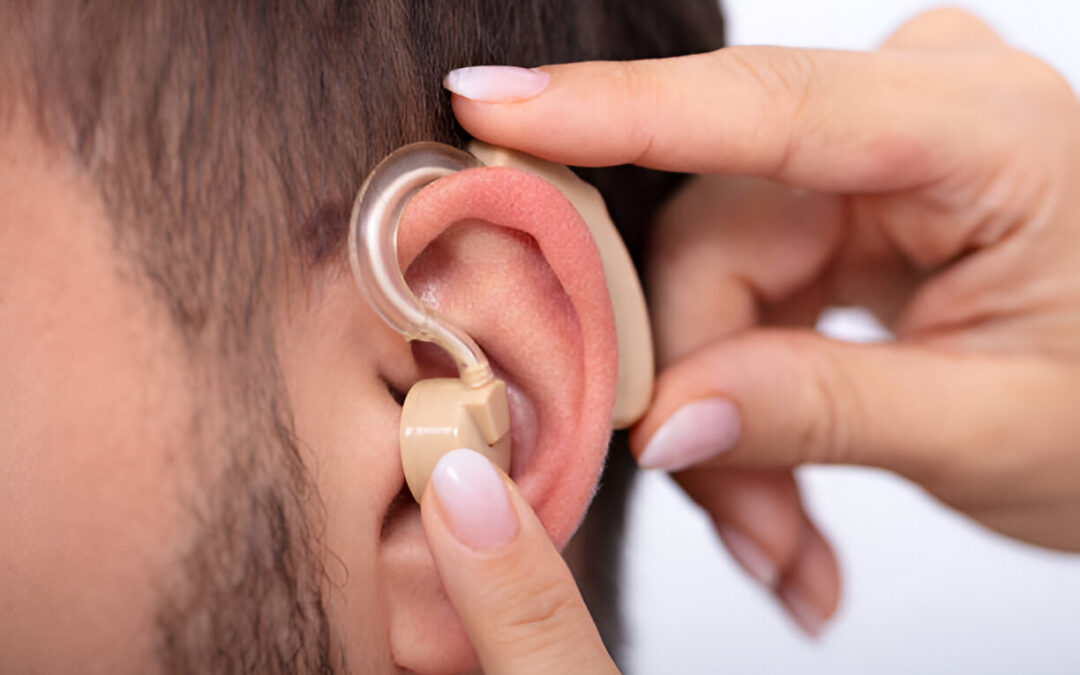Have you ever struggled to hear a conversation in a noisy environment like a restaurant, lecture hall, or movie theater? This difficulty is a common experience for many people with hearing loss. Hearing Loop technology can significantly improve the listening experience in these situations.
This comprehensive guide delves into the world of hearing loops, explaining how they work, their benefits for people with hearing loss, and how different audiences can leverage them.
What is a Hearing Loop?
A hearing loop, also known as an induction loop or T-coil loop, is an assistive listening system designed specifically for people who use hearing aids with a telecoil (T-coil) function. It works by transmitting sound wirelessly directly to the T-coil in a hearing aid, bypassing background noise and providing a clearer, more amplified listening experience.
How Does a Hearing Loop Work?
Here’s a breakdown of the hearing loop system:
- Audio Source: The sound source, such as a microphone picking up a speaker’s voice or music playing in a movie theater, is connected to a hearing loop amplifier.
- Induction Loop: The amplifier sends the audio signal to a copper wire loop discreetly installed around the perimeter of the listening area. This creates an electromagnetic field.
- Telecoil: The T-coil in a hearing aid picks up the electromagnetic signal from the loop.
- Amplified Sound: The T-coil converts the signal back into an audible sound, bypassing the hearing aid’s microphone and significantly reducing background noise.
Benefits of Hearing Loops for People with Hearing Loss:
Hearing loops offer numerous advantages for individuals with hearing loss:
- Reduced Background Noise: As the sound is transmitted directly to the T-coil, background noise is significantly reduced, resulting in clearer and more intelligible speech or music.
- Improved Speech Comprehension: This enhanced clarity allows for better understanding of conversations and presentations, promoting active participation in public settings.
- Reduced Listening Fatigue: Straining to hear in noisy environments can lead to fatigue. Hearing loops minimize this effort, allowing for a more comfortable listening experience.
- Increased Confidence: Improved hearing in public settings can boost confidence and social engagement for people with hearing loss.
- Accessibility: Hearing loops are a widely recognized assistive technology, promoting greater inclusion in various public spaces. They also allow venues to meet building code requirements including NCC D3.7 and AS1428.5 – Hearing Augmentation.
How to Use a Hearing Loop:
Using a hearing loop system is simple for individuals with T-coil equipped hearing aids:
- Check Your Hearing Aid: Ensure your hearing aid has a T-coil function and know how to activate it. Most hearing aids allow switching between microphone and T-coil settings using a button or program selection.
- Look for the Hearing Loop Sign: Public places equipped with hearing loops will typically display a visible international symbol of accessibility for hearing loss.
- Activate the T-Coil Setting: Switch your hearing aid to the T-coil program or position.
- Enjoy Clearer Listening: You should experience a significant improvement in sound quality and reduced background noise.
Where to Find Hearing Loops:
Hearing loop technology is increasingly being implemented in various public spaces to enhance accessibility for people with hearing loss. Some common places to find hearing loops include:
- Theaters (cinemas and performance halls)
- Museums and libraries
- Places of worship
- Conference centers and lecture halls
- Airports and bus terminals
- Government buildings and public offices
- Restaurants and hospitality venues
Hearing Loops vs. Other Assistive Listening Systems:
There are other assistive listening systems available, such as FM systems and infrared systems. However, hearing loops offer several advantages:
- No Additional Equipment: Hearing loops work directly with the T-coil already present in most modern hearing aids, eliminating the need for extra receivers or headphones.
- Discreet and Convenient: The hearing loop system is unobtrusive, seamlessly integrated into the environment, and requires minimal user interaction for operation.
- Wide Compatibility: Most modern hearing aids are equipped with T-coil functionality, ensuring broad compatibility with hearing loop systems.
Beyond Hearing Loops: Exploring Hearing Augmentation
Hearing loops are a valuable resource for people with hearing loss, providing a clearer listening experience in various environments. However, the realm of hearing assistance extends beyond loops. Advancements in technology are leading to exciting developments in hearing augmentation.
Hearing augmentation refers to technologies designed to enhance the hearing experience for both people with hearing loss and those with normal hearing. Some examples of hearing augmentation technologies include:
- Personal amplifiers: These portable devices can be used to amplify specific sounds in noisy environments, potentially benefiting people with normal hearing in specific situations.
- Directional microphones: These microphones can focus on the desired sound source, reducing background noise, and potentially aiding both individuals with hearing loss and those in noisy environments.
- Smart Hearing Aids: Modern hearing aids are becoming increasingly sophisticated, incorporating features like noise cancellation, directional microphones, and the ability to connect with smartphones and other devices for a personalized listening experience.
- Hearables: These are wearable devices designed to enhance specific aspects of hearing, such as music listening or phone calls. They may offer features like noise cancellation, ambient sound control, and personalized audio profiles.
The Role of Audiologists in Hearing Solutions:
If you experience hearing difficulties, consulting with a qualified audiologist is crucial. An audiologist can assess your hearing health, recommend appropriate hearing solutions (including hearing aids if needed), and advise on the best tools and technologies to optimize your listening experience. They can also guide you on how to leverage hearing loops and other assistive listening systems effectively.
Hearing loops are a powerful assistive technology, empowering people with hearing loss to confidently participate in public life. By understanding how hearing loops work, their benefits, and how to use them, individuals with hearing aids can unlock clearer communication and increased accessibility in various settings.


Recent Comments